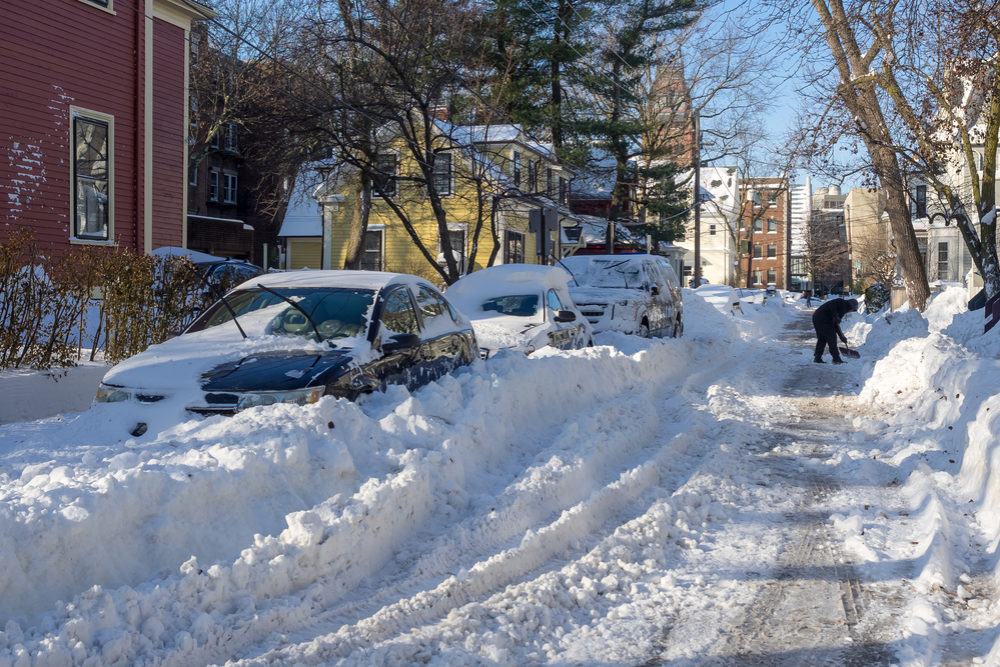Carbon Monoxide Warning Highlights Risk Of Snow Blocking Home Exhaust Pipes

With sub-zero temperatures forcing millions across the U.S. to crank up their heaters, and some places receiving record snowfalls that could block vents and exhaust from leaving the house, federal safety experts are warning that carbon monoxide poisoning may be more of a threat this year than usual.
Last week, the U.S. Centers for Disease Control and Prevention (CDC) issued a warning to residents nationwide, reminding them about the dangers of carbon monoxide, while they struggled to keep warm. The warning came in the middle of a vicious cold snap that hit some areas already trying to dig out from under several feet of snow.
The combination of high snow in some parts of Pennsylvania, the Northeast and the Midwest may have resulted in furnace vents being blocked by snow and ice, which could cause carbon monoxide gas to build up to dangerous and even deadly levels in homes, without residents realizing it. Additionally, the biting cold may limited how much shoveling and snow removal residents were willing to do.

Learn More About
Exposure to Carbon Monoxide Gas May Cause Permanent Brain Damage, Serious Injury or Death.
Learn More About this Lawsuit SEE IF YOU QUALIFY FOR COMPENSATIONSome may have limited their shoveling to walkways and driveways, without taking care to clear away snow and ice from vents.
On January 4, in Atlantic Highlands, New Jersey, firefighters reported saved a woman who nearly died from carbon monoxide poisoning in her own home after her vents became blocked due to snow drifts caused by the high winds from the so-called “bomb cyclone” which battered the eastern half of the nation.
According to a story in the Atlantic Highlands Herald, local firefighters said they feared many homes had blocked vents, placing residents in danger.
On the same day, New York State Electric & Gas issued a press release, also warning its customers to make sure vents were cleared of snow. The utility also warned that snow and ice should be gently removed from around gas meters and regulators, as well as from rooftops and gutters.
“We want customers to stay comfortable and safe all winter,” said Robert Kump, CEO of Avangrid Networks, New York State Electric & Gas’s parent company. “Taking the simple, but important step of keeping gas equipment free of snow and ice can help prevent serious safety hazards, and ensure that emergency responders have the access they need.”
Carbon Monoxide Risks
Carbon monoxide is often described as the “silent killer”, as the gas has no smell, taste, color or other irritating factors that may allow individuals to detect a leak. Following prolonged exposure, symptoms of carbon monoxide exposure may result in mental confusion, vomiting, loss of consciousness and quickly cause death.
The CDC estimates that carbon monoxide poisoning kills more than 400 people in the U.S. per year, on average. The highest numbers of carbon monoxide deaths typically occur in the winter months, likely due to heating efforts to stave off winter temperatures. However, there may be increased risks this year due to the number of power-disabling natural disasters caused by hurricanes.
The CDC has provided the following tips to help prevent carbon monoxide injuries and deaths:
- Never use a gas range or oven to heat a home
- Never leave vehicles running in an enclosed space, such as a garage.
- Do not use generators or any gasoline powered engines inside of a home, and keep them 20 feet or more away from windows, doors, and vents.
- Keep a functioning battery-powered or battery backup CO detector in your home, particularly when using a generator.
- Do not use charcoal grills, hibachis, lanterns or portable camping stoves inside homes, tents or campers.
- Seek shelter with friends, family or at a community shelter when temperatures are too hot or too cold.
- Do not burn anything in a stove or fireplace that is not vented.
- Call 911 or local Poison Control at 1-800-222-1222 or consult a healthcare professional immediately if CO poisoning is suspected.
Carbon monoxide gas leaks are a leading cause of fatal poisonings in the United States, due to the difficulty detecting the extremely toxic gas, which can quickly overcome an individual and result in permanent brain damage.
Individuals exposed to carbon monoxide typically experience symptoms similar to the flu. For individuals who survive exposure, many are left with devastating brain damage from carbon monoxide, which can impact them for the rest of their lives.
Get more articles like this sent directly to your inbox.
"*" indicates required fields





0 Comments